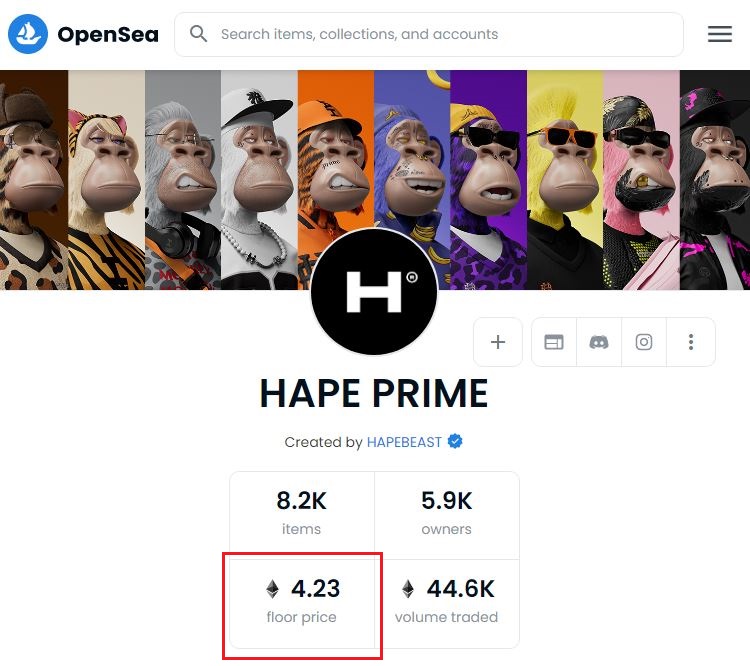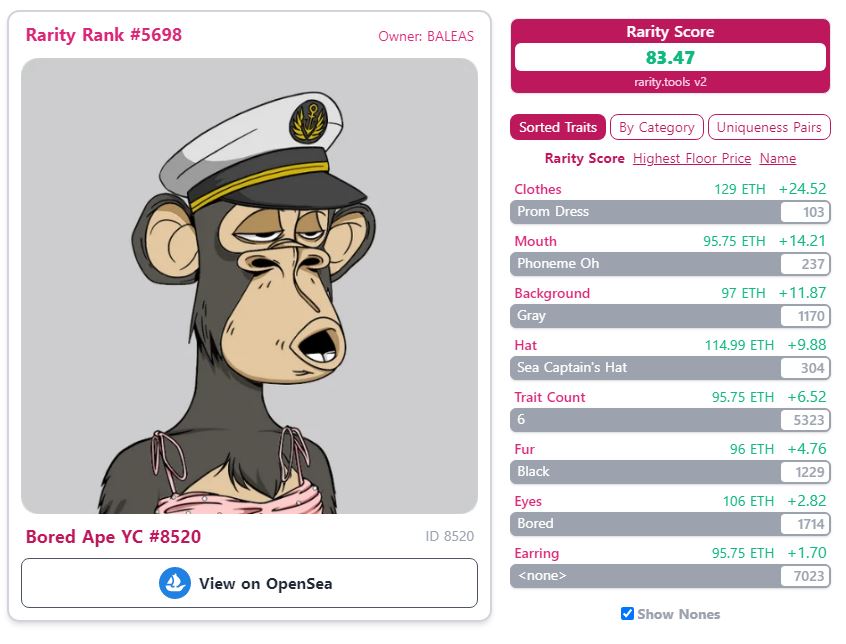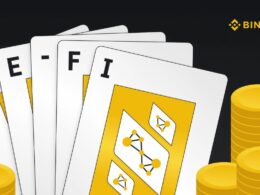As NFT adoption grows from the pioneers, nerds, speculators, and the tech savvy; to the more general population, there is need to explain certain lingo.
One of the most frequently mentioned terms is ‘Floor Price‘.
When you visit an NFT marketplace like OpenSea, you will find a section indicating the ‘floor price’. This is usually in Ethereum (ETH), rather than in USD.

Basically, ‘Floor Price’, sometimes referred to as ‘Price Floor’, is simply the lowest price an NFT can be bought.
The term, like many other terms in blockchain, originates from commodity trading.
As NFT marketplaces become common, floor price indicator was one of the most requested feature, and all major marketplaces now have it on every NFT collection.
From the above screenshot of the Hape Prime NFT Collection, the floor price is 4.23 ETH. That is the lowest any NFT in that collection will sell for, under normal circumstances. However, in reality, the actual price you pay may be moderately higher to so much higher than the floor price.
Can You Buy an NFT at Below the Floor Price?
As much as the floor price is clearly indicated, it is only an advisory figure. Since most marketplaces, certainly OpenSea which is the biggest, work in an auction format similar to eBay, you can technically place a bid for any amount.
This can even be an amount below the floor price. For popular NFT collections, your offer will most likely be declined, with the seller choosing the highest bid.
However in some cases, there may not be a lot of competition for you, and the seller may just well accept your bid even though it is below the floor price.
How to Know if an NFT is Worth More Than the Floor Price
Many popular NFT collections come in drops of thousands of individual items. It is hard for most people to know the value of an item that catches their eyes, and they often may end up overpaying.
First of all, it is critical to understand that the value of an NFT is driven by market reactions, key among them the pre-launch hype and build up. While factors like the NFT utility may come into play, it is often just a matter of whether the project went viral or not.
However, there is a way to determine the value of individual items within a collection. Rarity is a buzzword you will hear often, and it simply examines how few or many traits the item shares with other items in the collection.
Rarity is determined by supply, and this is artificially determined by the NFT creator. For instance, in CryptoPunks collection, there are only 9 NFTs with ‘Alien’ traits, out of a total of 10,000 NFTs. In this same collection, there are over 6000 ‘Male’ types, which would therefore make it less rare, or simply ‘Common’.
A website like Rarity.tools lets you check on any NFTs rarity. Simply copy the ID from OpenSea and you’ll get a score.

You are therefore more likely to buy a ‘common’ NFT at or even below the floor price, but not a ‘rare’ one.
In fact, rare items in popular collections like BAYC often get sold for hundreds of thousands of dollars.










